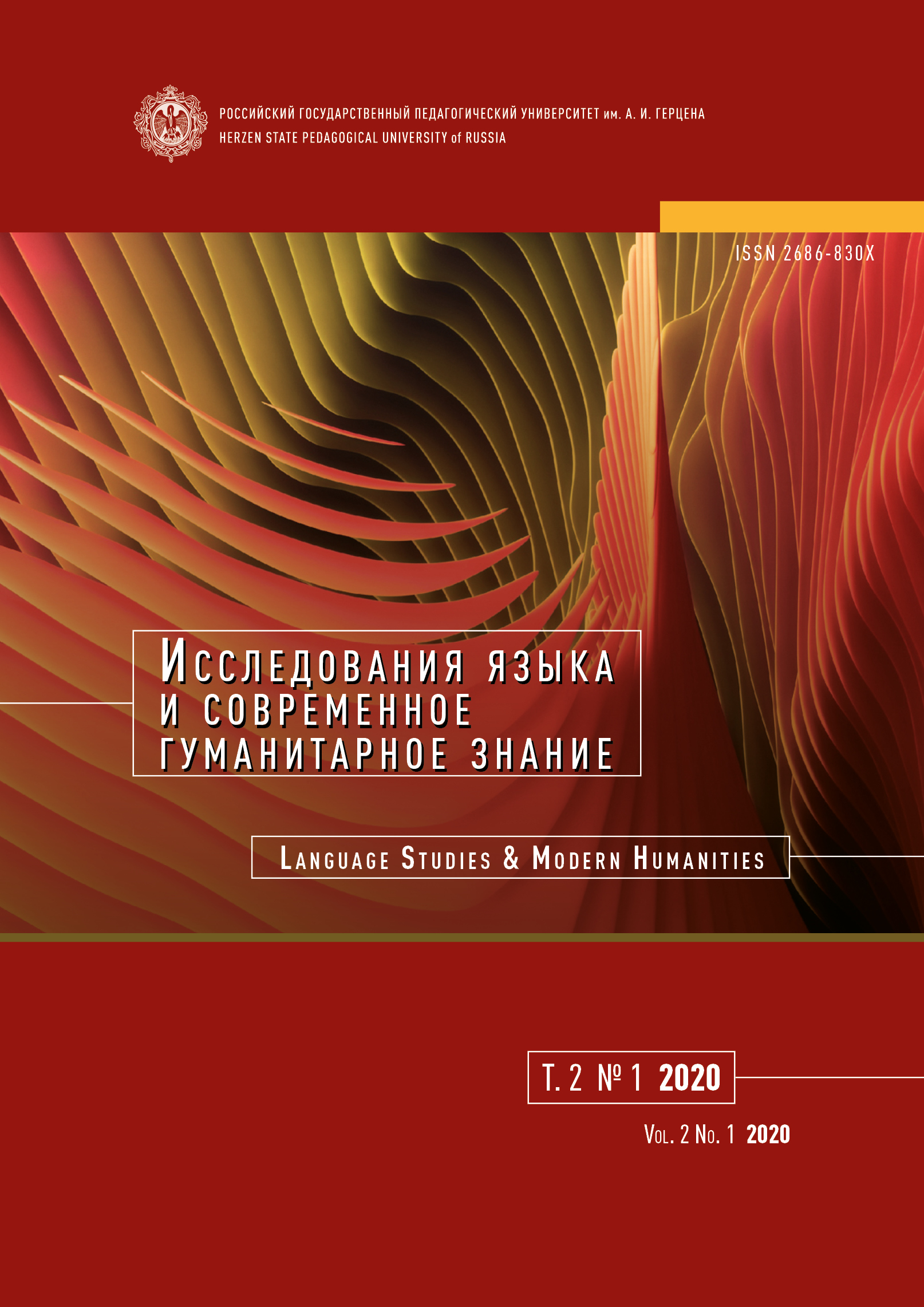Phenomenon of “words of the year” in German
DOI:
https://doi.org/10.33910/2686-830X-2020-2-1-12-17Keywords:
words of the year, lexicography of words of the year, neologisms, lexicography of neologisms, actual meaningAbstract
This study focuses on the words of the year in German as a comparatively understudied linguistic phenomenon. The article attempts to describe the term “word of the year” in comparison with the close to it term “neologism”. In addition to determining the status of words of the year in modern linguistics, special attention is paid to the further fate of words of the year after their publication, their role in adding to the vocabulary of the German language and lexicographical status.
The words of the year are comparable to neologisms: most words of the year are the result of word formation, adoption or expansion of the meaning of the word. However, among the words of the year there is a group of lexical units that have long existed in the German language. This group clearly demonstrates the nature of the words of the year.
Words of the year are lexical units, the meaning of which is particularly relevant. Relevance means the significance of a lexical unit for native speakers of language and culture as a whole in a specific time period, as well as the possible increase in its frequency of use associated with it.
The short fixed time of existence in the status of the word of the year and its correlation with a specific time period unite words of the year and neologisms. There is also a coincidence of their further life path, which may lead to the fixation of words or their meanings in the language, as well as to their disappearance.
The inclusion of words of the year in the dictionary is not determined by high frequency of use, presence of derivative, paradigmatic and syntagmatic activity. These factors are important only for neologisms. The determining criterion for words of the year is their semantics.
References
ЛИТЕРАТУРА
Никитина, О. А. (2011) Неологическая лексика и внутрисистемные отношения в словарном составе немецкого языка (на материале семантических неологизмов конца XX — начала XXI в.). Вестник Томского государственного университета. Филология, № 1 (13), с. 40–54.
Федоренко, Л. А. (2019) Лексикографический статус слов года в немецком языке и их роль в пополнении словарного состава немецкого языка. Выпускная квалификационная работа (магистратура). СПб., РГПУ (на правах рукописи), 91 с.
Штеффенс, Д., Никитина, О. А. (2012) От словаря неологизмов немецкого языка к немецко-русскому словарю неологизмов. Acta linguistica Petropolitana. Труды Института лингвистических исследований РАН, т. VIII, ч. 3, с. 371–394.
Herberg, D. (2002) Neologismen in der deutschen Gegenwartssprache. Probleme ihrer Erfassung und Beschreibung. Deutsch als Fremdsprache, H. 4, S. 195–200.
Schippan, T. (2002) Lexikologie der deutschen Gegenwartssprache. Tübingen: Max Niemeyer Verlag, 306 S.
SOURCES
Linguistisches Korpus „Cosmas II“. [Online]. Available at: https://cosmas2.ids-mannheim.de:6344/cosmas2-web/ menu.home.do (accessed 10.08.2019). (In German)
Wort des Jahres. Gesellschaft für deutsche Sprache. [Online]. Available at: https://gfds.de/aktionen/wort-des-jahres/ (accessed 14.08.2019). (In German)
DICTIONARIES AND REFERENCE LITERATURE
Drosdowski, G., Wermke, M., Scholze-Stubenrecht, W. (1996) Duden. Deutsches Universalwörterbuch. 3. Aufl. Mannheim; Leipzig; Wien; Zürich: Dudenverlag, 1816 S. (In German)
Duden — Das große Wörterbuch der deutschen Sprache in 10 Bänden. (1999) Leipzig, Wien, Zürich: Dudenverlag; Bibliographisches Institut Mannheim, 4800 S. (In German)
Duden online. [Online]. Available at: https://www.duden.de/ (accessed 14.08.2019). (In German)
REFERENCES
Fedorenko, L. A. (2019) Leksikograficheskij status slov goda v nemetskom yazyke i ikh rol’ v popolnenii slovarnogo sostava nemetskogo yazyka [The lexicographical status of the words of the year in German and their role in supplementing the vocabulary of German language]. Master’s thesis. Saint Petersburg, Herzen State Pedagogical University of Russia (as a manuscript), 91 p. (In Russian)
Herberg, D. (2002) Neologismen in der deutschen Gegenwartssprache. Probleme ihrer Erfassung und Beschreibung. Deutsch als Fremdsprache, H. 4, S. 195–200. (In German)
Nikitina, O. A. (2011) Neologicheskaya leksika i vnutrisistemnye otnosheniya v slovarnom sostave nemetskogo yazyka (na materiale semanticheskikh neologizmov kontsa XX — nachala XXI v.) [Neologisms and intersystem relations in the German vocabulary (on the material of the semantic neologisms of the end of the 20th — beginning of the 21st c.)]. Vestnik Tomskogo gosudarstvennogo universiteta. Filologiya — Tomsk State University Journal of Philology, no. 1 (13), pp. 40–53. (In Russian)
Schippan, T. (2002) Lexikologie der deutschen Gegenwartssprache. Tübingen: Max Niemeyer Verlag, 306 S. (In German)
Steffens, D., Nikitina, О. А. (2012) Ot slovarya neologizmov nemetskogo yazyka k nemetsko-russkomu slovaryu neologizmov [From a German dictionary of neologisms to a German-Russian neologisms dictionary]. Acta linguistica Petropolitana. Trudy Instituta lingvisticheskikh issledovanij RAN — Acta linguistica Petropolitana. Trudy Instituta lingvisticheskih issledovanij, vol. VIII, part 3, pp. 371–394. (In Russian)
Downloads
Published
Issue
Section
License
Copyright (c) 2020 Elena A. Smolonogina

This work is licensed under a Creative Commons Attribution-NonCommercial 4.0 International License.
The work is provided under the terms of the Public Offer and of Creative Commons public license Creative Commons Attribution 4.0 International (CC BY 4.0).
This license permits an unlimited number of users to copy and redistribute the material in any medium or format, and to remix, transform, and build upon the material for any purpose, including commercial use.
This license retains copyright for the authors but allows others to freely distribute, use, and adapt the work, on the mandatory condition that appropriate credit is given. Users must provide a correct link to the original publication in our journal, cite the authors' names, and indicate if any changes were made.
Copyright remains with the authors. The CC BY 4.0 license does not transfer rights to third parties but rather grants users prior permission for use, provided the attribution condition is met. Any use of the work will be governed by the terms of this license.







